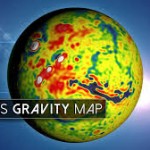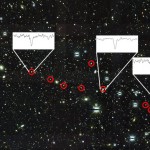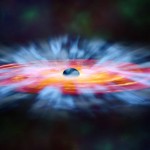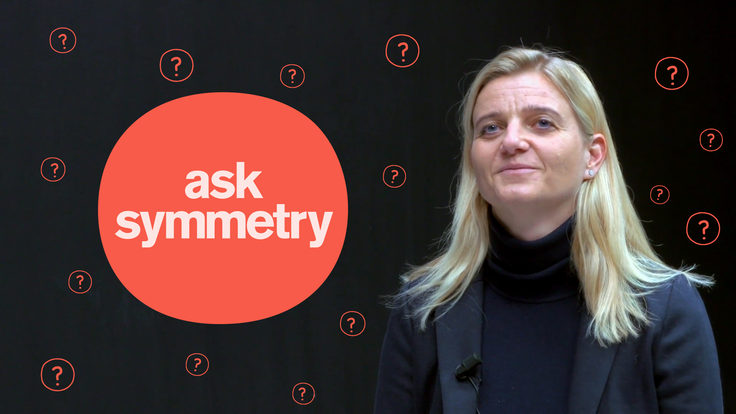Assemblea dei Soci di Frascati Scienza
Nuova mappa della gravità di Marte
 Scienziati al Goddard Space Flight Center della NASA hanno utilizzato le lievi fluttuazioni orbitali di tre sonde spaziali in orbita attorno a Marte per misurarne il campo gravitazionale con un dettaglio senza precedenti. La mappa fornisce nuove indicazioni sullo spessore della crosta marziana, sulla composizione interna del pianeta e sulle variazioni stagionali di ghiaccio secco ai poli Continue reading
Scienziati al Goddard Space Flight Center della NASA hanno utilizzato le lievi fluttuazioni orbitali di tre sonde spaziali in orbita attorno a Marte per misurarne il campo gravitazionale con un dettaglio senza precedenti. La mappa fornisce nuove indicazioni sullo spessore della crosta marziana, sulla composizione interna del pianeta e sulle variazioni stagionali di ghiaccio secco ai poli Continue reading
Galassia nana testimone d’eventi catastrofici
 Le osservazioni condotte sulla galassia nana ultradebole Reticulum II, scoperta di recente grazie ai dati della Dark Energy Survey, cercano di fare chiarezza sui processi alla base della creazione degli elementi più pesanti presenti nel nostro universo, come l’oro e il piombo. I risultati, pubblicati su Nature, suggeriscono che all'origine di questi elementi ci sarebbero eventi catastrofici, come per esempio la collisione tra due stelle di neutroni Continue reading
Le osservazioni condotte sulla galassia nana ultradebole Reticulum II, scoperta di recente grazie ai dati della Dark Energy Survey, cercano di fare chiarezza sui processi alla base della creazione degli elementi più pesanti presenti nel nostro universo, come l’oro e il piombo. I risultati, pubblicati su Nature, suggeriscono che all'origine di questi elementi ci sarebbero eventi catastrofici, come per esempio la collisione tra due stelle di neutroni Continue reading
Il Prof. Luigi Luca Cavalli Sforza visita l’Istituto del Cnr di Pallanza
Venti di quasar
 Provengono da una galassia lontana, e fra le emissioni generate da un buco nero supermassiccio sono quelle più veloci mai osservate a lunghezze d’onda ultraviolette. Mauro Dadina (INAF): «Hanno energia sufficiente a spazzare via il gas da cui si formano le stelle delle galassie» Continue reading
Provengono da una galassia lontana, e fra le emissioni generate da un buco nero supermassiccio sono quelle più veloci mai osservate a lunghezze d’onda ultraviolette. Mauro Dadina (INAF): «Hanno energia sufficiente a spazzare via il gas da cui si formano le stelle delle galassie» Continue reading
Why are particle accelerators so large?
CERN physicist Edda Gschwendtner explains why we need big machines to study tiny particles.

The Large Hadron Collider at CERN is a whopping 27 kilometers in circumference. Edda Gschwendtner, physicist and project leader for CERN's plasma wakefield acceleration experiment (AWAKE), explains why scientists use such huge machines.
We can only see so much with the naked eye. To see things that are smaller, we use a microscope, and to see things that are further away, we use a telescope. The more powerful the tool, the more we can see.
Particle accelerators are tools that allow us probe both the fundamental components of nature and the evolution and origin of all matter in the visible (and maybe even the invisible?) universe. The more powerful the accelerator, the further we can see into the infinitely small and the infinitely large.
You can think about particle accelerators like a racetrack for particles. Racecars don’t start out going 200 miles per hour—they must gradually accelerate over time on either a large circular racetrack or a long, straight road.
In physics, these two types of “tracks” are circular accelerators and linear accelerators.
Particles in circular accelerators gradually gain energy as they race through an accelerating structure at a certain position in the ring. For instance, the protons in the LHC make 11,000 laps every second for 20 minutes before they reach their collision energy. During their journey, magnets guide the particles around the bends in the accelerator and keep them on course.
But just like a car on a curvy mountain road, the particles’ energy is limited by the curves in the accelerators. If the turns are too tight or the magnets are too weak, the particles will eventually fly off course.
Linear accelerators don’t have this problem, but they face an equally challenging aspect: particles in linear accelerators only have the length of the track where they pass through accelerating structures to reach their desired energy. Once they reach the end, that’s it.
So if we want to look deeper into matter and further back toward the start of the universe, we have to go higher in energy, which means we need more powerful tools.
One option is to build larger accelerators—linear accelerators hundreds of miles long or giant circular accelerators with long, mellow turns.
We can also invest in our technology. We can develop accelerating structure techniques to rapidly and effectively accelerate particles in linear accelerators over a short distance. We can also design and build incredibly strong magnets—stronger than anything that exists today—that can bend ultra-high energy particles around the turns in circular accelerators.
Realistically, the future tools we use to look into the infinitely small and infinitely large will involve a combination of technological advancement and large-scale engineering to bring us closer to understanding the unknown.
Have a burning question about particle physics? Let us know via email or Twitter (using the hashtag #AskSymmetry). We might answer you in a future video!

